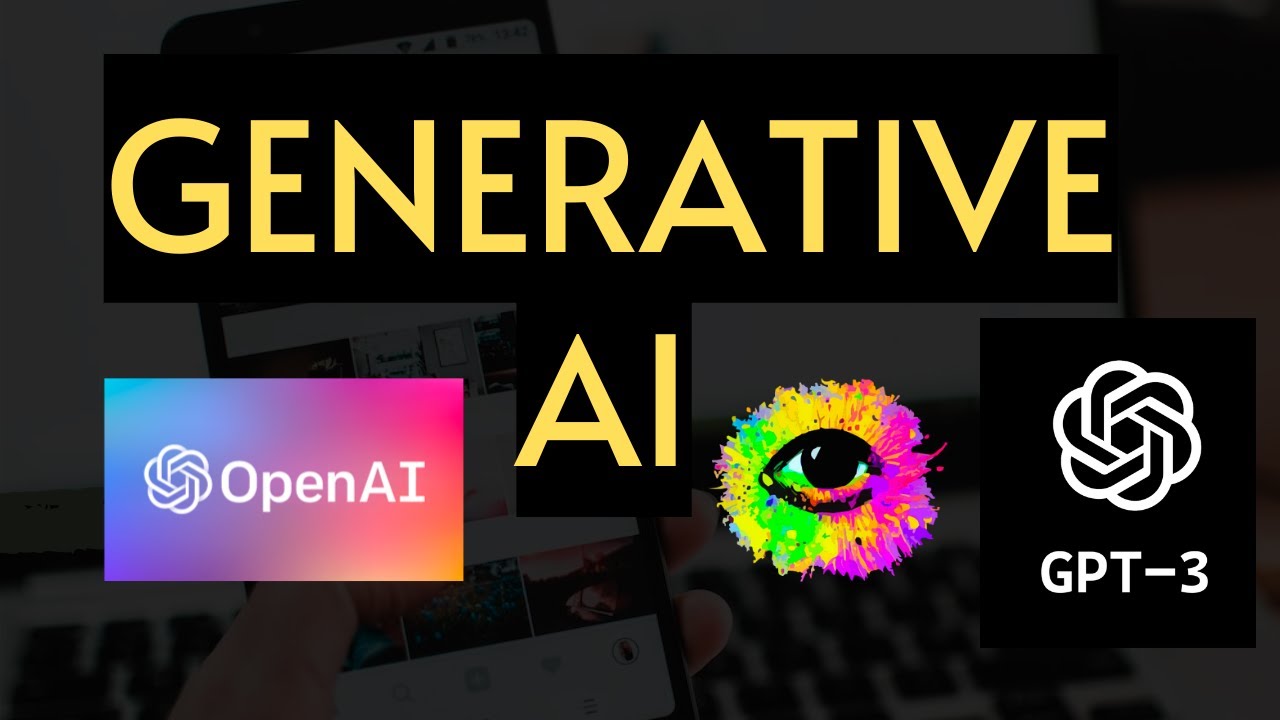In the fast-paced world of technology, innovation is everything. And there’s one technology that’s shaking up the industry like never before: Generative AI.
Hey there! Have you ever heard of generative AI? It’s this super cool technology that’s becoming more and more important in today’s world.
So, let’s get started!
Table of Contents
- What is Generative AI?
- Importance and relevance in today’s world
- Key concepts and terminology
- Types of Generative AI Models
- How Generative AI Works?
- Applications of Generative AI
- Challenges and Limitations
- Summary
What is Generative AI?
Generative AI is a type of artificial intelligence that can create new content, such as images, text, music, or even videos. It does this by learning from existing data, and then generating new data based on what it has learned. Imagine having an AI friend that can paint beautiful pictures or write stories just by looking at a few examples.
That’s what generative AI is all about!
Importance and relevance in today’s world
Now you might be thinking, “Cool, but why should I care about generative AI?” Well, it’s actually super relevant in our daily lives!
Here are a few examples:
- Personalized content: Have you ever scrolled through your social media feed and noticed how the ads seem to know exactly what you’re interested in? That’s because generative AI can help create personalized content based on your preferences, making ads more effective and relevant to you.
- Art and design: Artists and designers are using generative AI to create amazing pieces of art and innovative designs. For example, the AI-generated artwork called “Portrait of Edmond Belamy” sold for $432,500 at auction in 2018!
- Entertainment: Remember that time when OpenAI’s MuseNet generated a song in the style of Queen? That’s just one example of how generative AI can be used to create music or even help write scripts for movies and TV shows.
- News and journalism: Some news outlets use generative AI to draft articles or summaries, especially when it comes to reporting on large datasets, like financial reports or sports statistics.
Key concepts and terminology
Now that you know a bit about generative AI and its importance let’s dive deeper and learn the key concepts and terms to understand it better.
Generative models
Generative models are the core of generative AI. They learn the underlying structure or distribution of the data, and they can then create new data that looks similar to the original. For example, if a generative model is trained on photos of cats, it will be able to generate new, unique images of cats that have never existed before!
Discriminative models
Discriminative models are the counterparts of generative models. Instead of generating new data, they focus on distinguishing or classifying existing data into different categories. For example, a discriminative model could be trained to tell the difference between pictures of cats and dogs.
Latent space
Latent space is like the hidden world of generative AI, where all the creative potential lies. It’s a lower-dimensional space that the AI model maps the original data to during the learning process. By exploring the latent space, generative AI models can discover new combinations and variations of the data, leading to the generation of entirely new content.
Training data
Training data is the foundation of any AI model, including generative AI. The more high-quality data you have, the better your AI model will be. For generative AI, the training data usually consists of a large collection of similar items, like photos, text, or music. This data helps the AI model learn patterns and structures, so it can generate new content based on those patterns.
Types of Generative AI Models
Alright, now that you’ve got the basics down, let’s talk about some popular types of generative AI models. These models have different approaches to learning and generating new content, and each has its own unique strengths and weaknesses.
Restricted Boltzmann Machines (RBMs)
Restricted Boltzmann Machines (RBMs) are an older type of generative AI model, but they still played a crucial role in AI’s history. They’re like the grandparents of modern generative AI! RBMs are energy-based models that learn patterns in the data and can generate new samples.
They were used in the early days of AI for tasks like image and text generation, but nowadays, they’ve been mostly replaced by more advanced models.
Variational Autoencoders (VAEs)
Variational Autoencoders (VAEs) are a newer type of generative AI model that’s been gaining popularity. They work by compressing the data into a lower-dimensional latent space, then reconstructing it to generate new samples. VAEs have been used in many applications, like creating new images, music, or even designing molecules for drug discovery!
Generative Adversarial Networks (GANs)
Generative Adversarial Networks (GANs) are probably the most famous type of generative AI model. They’re like a creative duo: one AI model (the generator) creates new data, while the other AI model (the discriminator) judges whether the generated data looks real or fake.
The two models compete against each other, and this competition helps improve the quality of the generated content. GANs have been used to create stunningly realistic images, like those DeepArt.io-style paintings, or even fake celebrity faces on websites like “This Person Does Not Exist.”
Transformer-based models (e.g., GPT-4)
Transformer-based models, like GPT-4, are a game-changer in the world of generative AI. They’re particularly good at understanding and generating text. GPT-4, for example, is the AI model I’m based on! These models are trained on vast amounts of text data from the internet, and they can generate incredibly coherent and context-aware responses, making them great for tasks like writing, translation, and even answering questions.
The impressive thing about GPT-4 is that it can generate content in various languages and styles, depending on the user’s input.
So, there you have it! These are some popular types of generative AI models that are shaping the future of AI-generated content. In the next section, I’ll explain how these models work and how they create new content.
How Generative AI Works?
Now that you know about different generative AI models, let’s talk about how they actually work. It’s like a behind-the-scenes look at the AI artist’s creative process!
Process of training generative models
Data collection
The first step in training a generative AI model is collecting a lot of data. This data should be high-quality and relevant to the kind of content you want the AI to create. For example, if you want to generate images of cats, you’d need a large dataset of cat photos.
Model architecture selection
Next, you’ll need to choose the right model architecture for your task. As we discussed earlier, there are various types of generative AI models, like RBMs, VAEs, GANs, and transformer-based models. Each one has its own strengths and weaknesses, so you’ll want to pick the one that best suits your needs.
Model training
Once you’ve got your data and model architecture, it’s time to start training the model. During training, the model learns the patterns and structures within the data, so it can generate new content that resembles the original. This process can take a lot of time and computing power, depending on the size and complexity of the model.
Model evaluation
After the model has been trained, it’s essential to evaluate its performance. You’ll want to make sure it’s generating high-quality content that’s similar to the original data but still unique and creative. There are various evaluation metrics and techniques that can be used, depending on the type of data and model you’re working with.
Generating new data using trained models
Sampling from latent space
Now that your model is trained, it’s time to generate some new content! This process often involves sampling from the latent space, which, as we discussed earlier, is like the hidden world of creative potential within the model. By exploring the latent space, the model can discover new combinations and variations of the original data.
Decoding generated data
Once the model has sampled from the latent space, it needs to decode that information back into the format of the original data, like images or text. This step is crucial because it transforms the hidden creative potential of the latent space into actual, tangible content that we can see and interact with.
Post-processing and refinement
Finally, the generated content might need some post-processing or refinement. This can involve things like cleaning up the text, enhancing the colors in an image, or adjusting the tempo of a music piece. This step helps ensure that the AI-generated content is polished and ready to be enjoyed!
Applications of Generative AI
Now that we’ve covered how generative AI works, let’s explore some of the exciting applications where it’s making a real impact. From art and design to personalized content, generative AI is revolutionizing various industries.
Art and design
Generative AI has been a game-changer in the world of art and design. Artists are using AI tools to create stunning visual art, like the AI-generated painting “Portrait of Edmond Belamy,” which sold for $432,500 in 2018. Designers are also using generative AI to create unique patterns, textures, and product designs that would be difficult or time-consuming to make by hand.
Text generation and natural language processing
Text generation is another significant application of generative AI, especially with transformer-based models like GPT-4. These models can generate coherent and context-aware text, making them useful for tasks like writing articles, generating dialogue for video games, or even composing poetry.
For instance, the AI-written novel “1 the Road” was published in 2018, showcasing the creative potential of AI in literature.
Music and audio synthesis
Generative AI is also making waves in the music industry. AI models can create entirely new music pieces or remix existing ones in innovative ways. OpenAI’s MuseNet is a great example – it can generate music in various styles, from classical to pop. Plus, AI is being used in sound design to create immersive audio experiences for movies, games, and virtual reality.
Video and image generation
Generative AI has come a long way in creating realistic videos and images. Remember the famous DeepArt.io-style paintings or the eerily realistic faces from “This Person Does Not Exist”? These are all products of AI-powered image generation! In the film industry, AI-generated content is being used for special effects, animation, and even creating entire scenes
Personalized content and recommendations
Finally, generative AI is playing a significant role in delivering personalized content and recommendations. By understanding users’ preferences and behavior, AI models can create tailored content like ads, news articles, or even entire websites. For example, Spotify’s personalized playlists use AI to recommend songs that match your music taste, making your listening experience more enjoyable.
So, as you can see, generative AI has a wide range of exciting applications that are transforming the way we create and consume content. With continued advancements in AI, the possibilities are virtually limitless!
Challenges and Limitations
As amazing as generative AI is, it’s essential to recognize that it also comes with challenges and limitations. From training data quality to ethical concerns, let’s discuss some of the main issues surrounding generative AI.
Training data quality and availability
One of the biggest challenges in generative AI is finding high-quality and diverse training data. The performance of an AI model highly depends on the quality of the data it’s trained on. For instance, if an AI model is trained on low-resolution or poorly labeled images, it might not generate very realistic or accurate content.
Additionally, in some domains, collecting large amounts of data can be difficult or even impossible due to privacy concerns or other limitations.
Model complexity and computational resources
Generative AI models can be incredibly complex and resource-intensive. Training a state-of-the-art model like GPT-4 requires vast amounts of computing power and energy, which can be expensive and environmentally unfriendly. These resource demands can also limit access to advanced AI technology, making it difficult for smaller organizations or individuals to participate in AI research and development.
Ethical concerns and potential misuse
As generative AI becomes more powerful and realistic, ethical concerns and potential misuse also grow. For example, AI-generated deepfakes can be used to spread disinformation or harass individuals by creating fake videos or images. Additionally, AI-generated text could be used to produce misleading news articles, spam, or even malicious content. Addressing these ethical challenges and ensuring that generative AI is used responsibly is a crucial concern for the AI community.
Bias and fairness in AI-generated content
Another critical challenge is addressing bias and fairness in AI-generated content. AI models learn from the data they’re trained on, and if that data contains biases, those biases can be passed on to the generated content. For example, if an AI model is trained on job descriptions that contain gendered language, it might produce biased job ads that perpetuate stereotypes.
Ensuring that AI-generated content is unbiased, and fair is an ongoing challenge that requires constant vigilance and effort from researchers, developers, and users alike
Summary
So, we’ve covered quite a lot about generative AI, from understanding how it works to exploring its various applications and addressing its challenges. To recap, generative AI is an exciting field that involves training AI models to create new, unique content based on existing data. It has a wide range of applications, including art and design, text generation, music synthesis, video and image generation, and personalized content recommendations.
- As we look to the future, the potential for generative AI is vast. Researchers are constantly working on developing more advanced models and techniques, which could lead to even more realistic and creative AI-generated content.
- For example, we might see AI models that can understand and generate content across different modalities, like creating a video and its accompanying soundtrack simultaneously.
- Another area of growth is the development of more efficient models and algorithms, which could reduce the computational resources needed for AI training and make it more accessible to a wider range of people and organizations.
- Furthermore, as the AI community becomes more aware of ethical concerns and issues related to bias and fairness, we can expect advancements in techniques for mitigating these issues, ensuring that AI-generated content is both responsible and inclusive.
In conclusion, generative AI is an exciting and rapidly evolving field with immense potential to transform the way we create and consume content. As we continue to explore and push the boundaries of AI technology, the future of generative AI promises to be an exciting and innovative journey.
Thank you for reading our blog, we hope you found the information provided helpful and informative. We invite you to follow and share this blog with your colleagues and friends if you found it useful.
Share your thoughts and ideas in the comments below. To get in touch with us, please send an email to dataspaceconsulting@gmail.com or contactus@dataspacein.com.
You can also visit our website – DataspaceAI


